High Power Laser Facilities at the Kansai Photon Science Institute
Abstract
:1. Introduction
2. PW Laser Facility J-KAREN-P
2.1. Ultrashort High-Peak-Power Laser J-KAREN-P
2.2. Relativistic Plasma Experiment at Interaction Chamber Room
2.2.1. Laser Beam Characterization
2.2.2. Short-F Chamber
2.2.3. Long-F Chamber
2.3. Planned and Possible Experiments
3. X-ray Laser Facility
4. High-Repetition-Rate, High-Peak-Power Laser Systems and Their Applications
5. Summary
Conflicts of Interest
References
- Kiriyama, H.; Mori, M.; Pirozhkov, A.S.; Ogura, K.; Sagisaka, A.; Kon, A.; Esirkepov, T.Z.; Hayashi, Y.; Kotaki, H.; Kanasaki, M.; et al. High-contrast, high-intensity petawatt-class laser and applications. IEEE J. Sel. Top. Quantum Electron. 2015, 21, 1601118. [Google Scholar] [CrossRef]
- Nishiuchi, M.; Sakaki, H.; Esirkepov, T.Z.; Nishio, K.; Pikuz, T.A.; Faenov, A.Y.; Skobelev, I.Y.; Orlandi, R.; Sako, H.; Pirozhkov, A.S.; et al. Acceleration of highly charged GeV Fe ions from a low-Z substrate by intense femtosecond lasers. Phys. Plasmas 2015, 22, 033107. [Google Scholar] [CrossRef]
- Nakamura, T.; Koga, J.K.; Esirkepov, T.Z.; Kando, M.; Korn, G.; Bulanov, S.V. High-Power Gamma-Ray Flash Generation in Ultraintense Laser-Plasma Interactions. Phys. Rev. Lett. 2012, 108, 195001. [Google Scholar] [CrossRef] [PubMed]
- Mori, M.; Kando, M.; Kotaki, H.; Hayashi, Y.; Bulanov, S.V.; Koga, J.; Kondo, K.; Pirozhkov, A.S.; Nishimura, H.; Nagashima, K. Condition of MeV Electron Bunch Generated from Argon Gas-Jet Target in the Self-Modulated Laser Wakefield Regime. J. Phys. Soc. Jpn. 2011, 80, 105001. [Google Scholar]
- Pirozhkov, A.S.; Kando, M.; Esirkepov, T.Z.; Gallegos, P.; Ahmed, H.; Ragozin, E.N.; Faenov, A.Y.; Pikuz, T.A.; Kawachi, T.; Sagisaka, A.; et al. Soft-X-Ray Harmonic Comb from Relativistic Electron Spikes. Phys. Rev. Lett. 2012, 108, 135004. [Google Scholar] [CrossRef] [PubMed]
- Pirozhkov, A.S.; Kando, M.; Esirkepov, T.Z.; Gallegos, P.; Ahmed, H.; Ragozin, E.N.; Faenov, A.Y.; Pikuz, T.A.; Kawachi, T.; Sagisaka, A.; et al. High order harmonics from relativistic electron spikes. New J. Phys. 2014, 16, 093003. [Google Scholar] [CrossRef]
- Kawase, K.; Kando, M.; Hayakawa, T.; Daito, I.; Kondo, S.; Homma, T.; Kameshima, T.; Kotaki, H.; Chen, L.M.; Fukuda, Y.; et al. Development of a bub-MeV X-ray source via Compton backscattering. Nucl. Inst. Methods Phys. Res. A 2011, 637, S141. [Google Scholar] [CrossRef]
- Kando, M.; Fukuda, Y.; Pirozhkov, A.S.; Ma, J.; Daito, I.; Chen, L.; Esirkepov, T.Z.; Ogura, K.; Homma, T.; Hayashi, Y.; et al. Demonstration of Laser-Frequency Upshift by Electron-Density Modulations in a Plasma Wakefield. Phys. Rev. Lett. 2007, 99, 135001. [Google Scholar] [CrossRef] [PubMed]
- Kando, M.; Pirozhkov, A.S.; Kawase, K.; Esirkepov, T.Z.; Fukuda, Y.; Kiriyama, H.; Okada, H.; Daito, I.; Kameshima, T.; Hayashi, Y.; et al. Enhancement of Photon Number Reflected by the Relativistic Flying Mirror. Phys. Rev. Lett. 2009, 103, 235003. [Google Scholar] [CrossRef] [PubMed]
- Kotaki, H.; Masuda, S.; Kando, M.; Koga, J.K.; Nakajima, K. Head-on injection of a high quality electron beam by the interaction of two pulses. Phys. Plasmas 2004, 11, 3296. [Google Scholar] [CrossRef]
- Kotaki, H.; Daito, I.; Kando, M.; Hayashi, Y.; Kawase, K.; Kameshima, T.; Fukuda, Y.; Homma, T.; Ma, J.; Chen, L.M.; et al. Electron Optical Injection with Head-On and Countercrossing Colliding Laser Pulses. Phys. Rev. Lett. 2009, 103, 194803. [Google Scholar] [CrossRef] [PubMed]
- Mikami, K.; Hasegawa, N.; Okada, H.; Kondo, S.; Nishikino, M.; Kawachi, T. Development of High-Repetition Rate and High-Pulse-Energy Nd:YAG MOPA Laser System. In Proceedings of the ICXRL2016, Nara, Japan, 22–27 May 2016. in press. [Google Scholar]
- Ochi, Y.; Nagashima, K.; Maruyama, M.; Tsubouchi, M.; Yoshida, F.; Kohno, N.; Mori, M.; Sugiyama, A. Yb:YAG thin-disk chirped pulse amplification laser system for intense terahertz pulse generation. Opt. Express 2015, 23, 15057–15064. [Google Scholar] [CrossRef] [PubMed]
- Maruyama, M.; Okada, H.; Ochi, Y.; Nagashima, K. Sub-picosecond regenerative amplifier of Yb-doped Y2O3 ceramic thin disk. Opt. Express 2016, 24, 1685–1692. [Google Scholar] [CrossRef] [PubMed]
- Tsubouchi, M.; Nagashima, K.; Yoshida, F.; Ochi, Y.; Maruyama, M. Contact grating device with Fabry-Perot resonator for effective terahertz light generation. Opt. Lett. 2014, 39, 5439–5442. [Google Scholar] [CrossRef] [PubMed]
- Hosaka, K.; Yokoyama, A.; Yamanouchi, K.; Itakura, R. Correlation between a photoelectron and a fragment ion in dissociative ionization of ethanol in intense near-infrared laser fields. J. Chem. Phys. 2013, 138, 204301:1–204301:9. [Google Scholar] [CrossRef] [PubMed]
- Tsubouchi, M.; Nagai, M.; Ohshima, Y. Terahertz tomography of a photo-induced carrier based on pump-probe spectroscopy using counterpropagation geometry. Opt. Lett. 2012, 37, 3528–3530. [Google Scholar] [CrossRef] [PubMed]
- Tsubouchi, M.; Kumada, T. Development of high efficiency etalons with an optical shutter for terahertz laser pulses. Opt. Express 2012, 20, 28500–28506. [Google Scholar] [CrossRef] [PubMed]
- Kohno, N.; Itakura, R.; Tsubouchi, M. Mechanism of relativistic Doppler reflection from a photoinduced moving plasma front studied by terahertz time-domain spectroscopy. Phys. Rev. B 2016, 94, 155205. [Google Scholar] [CrossRef]
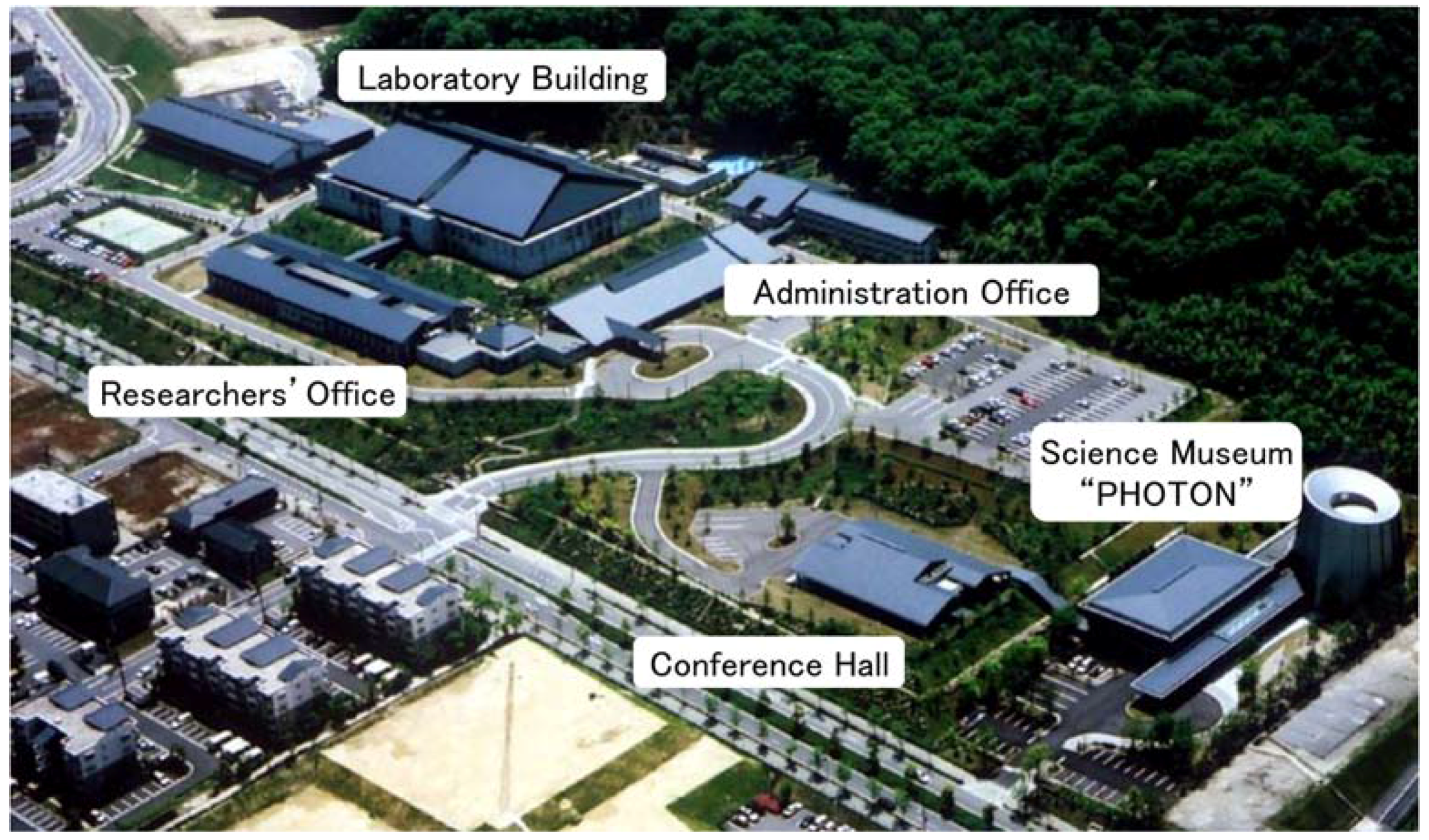
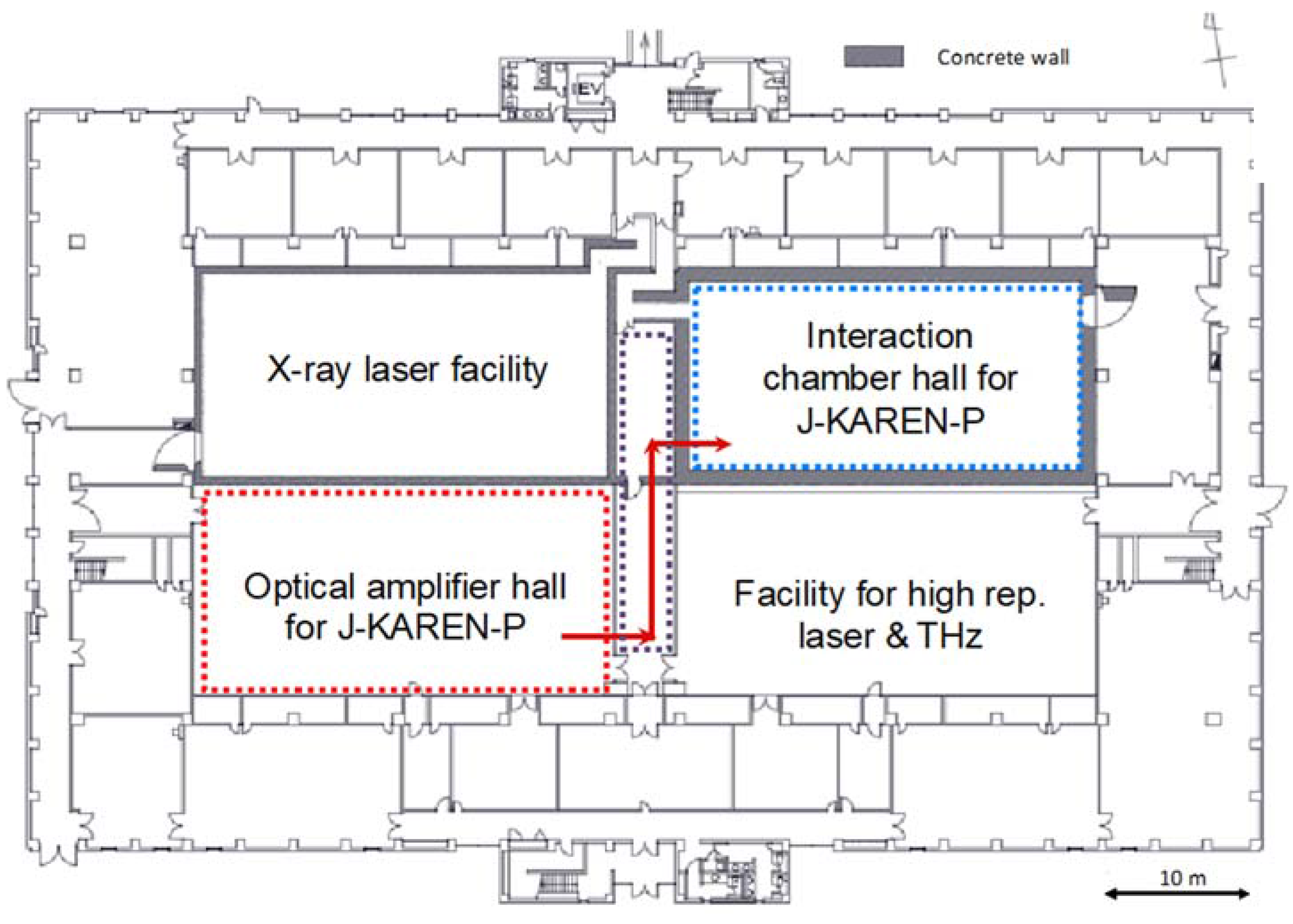
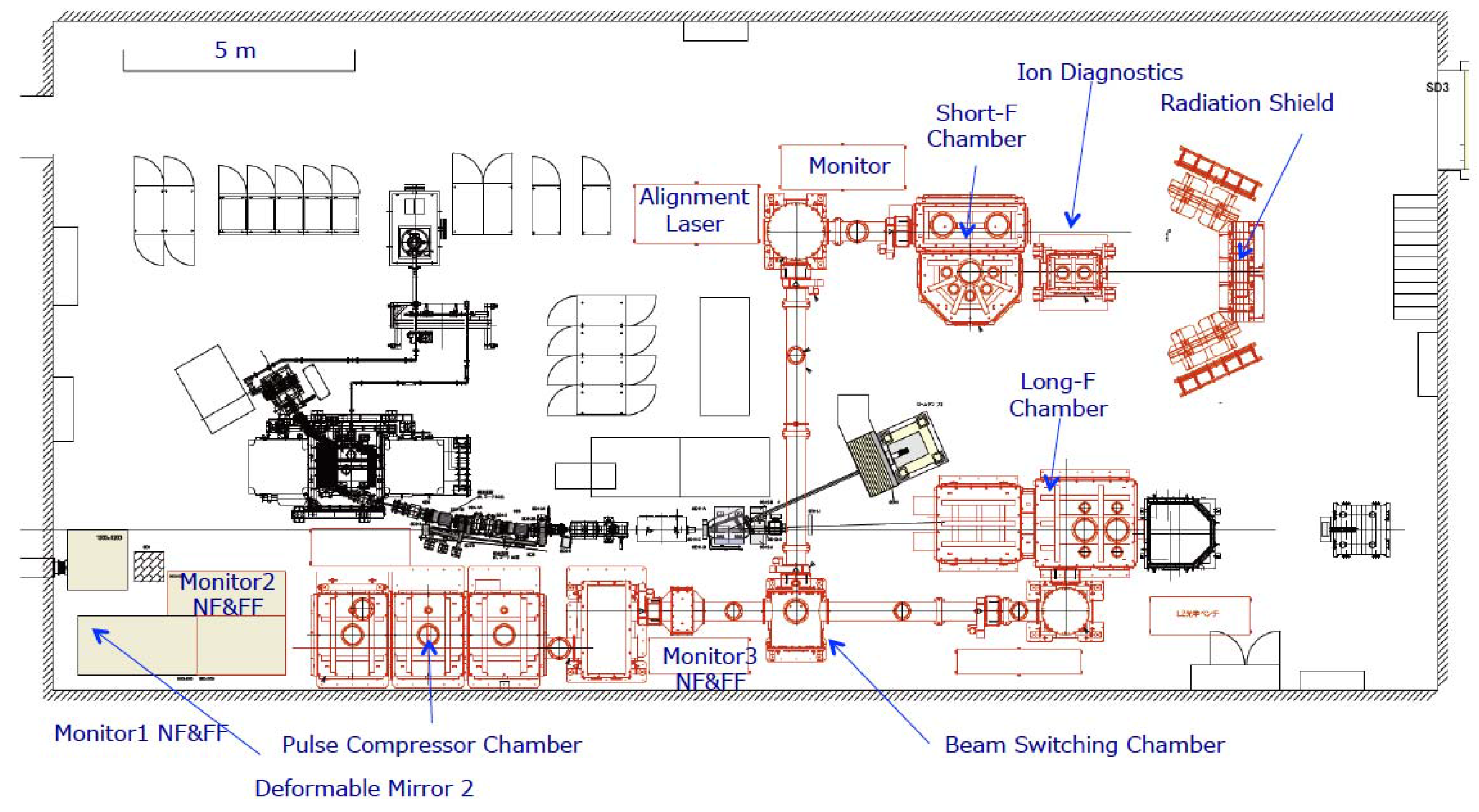

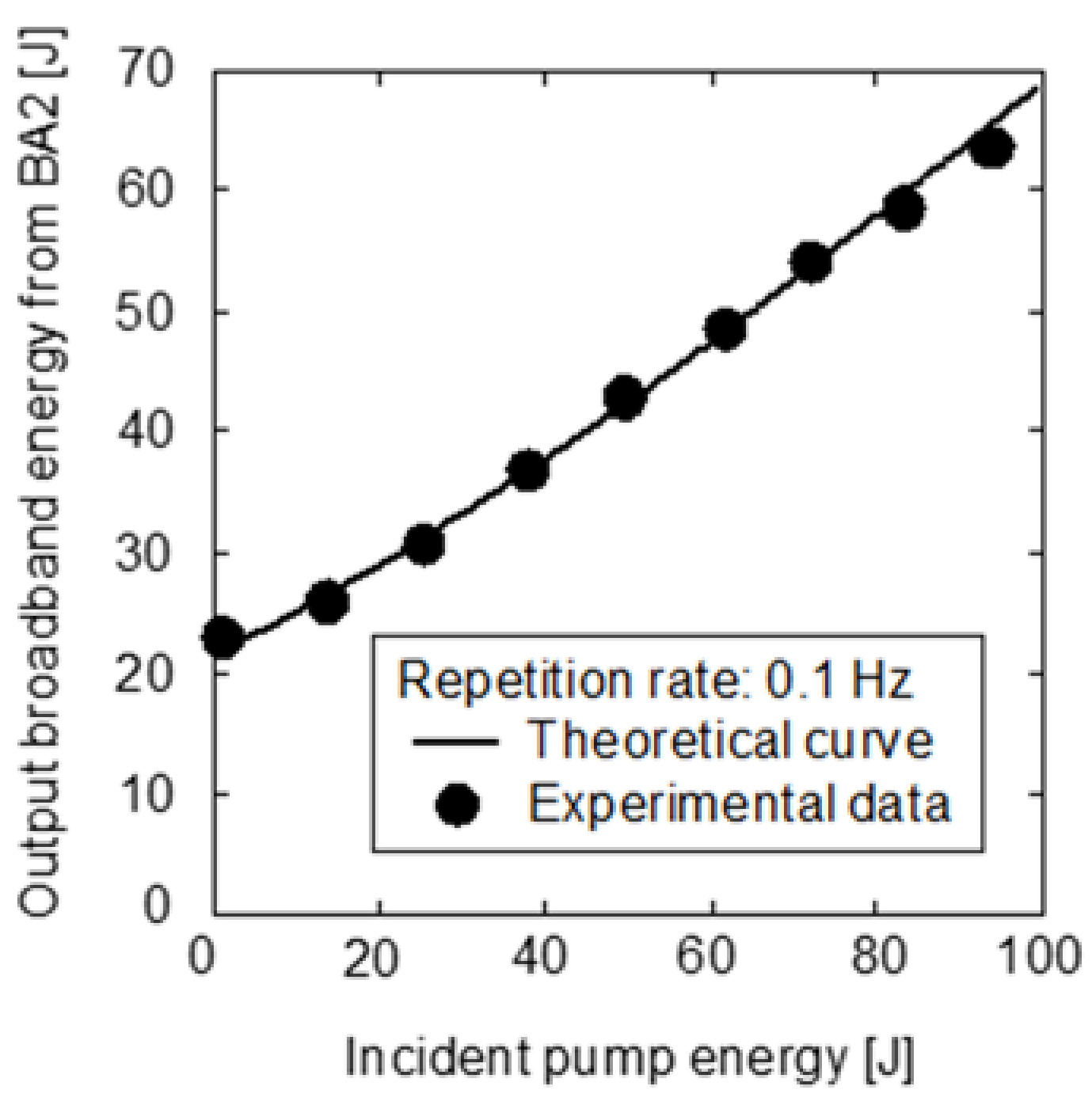
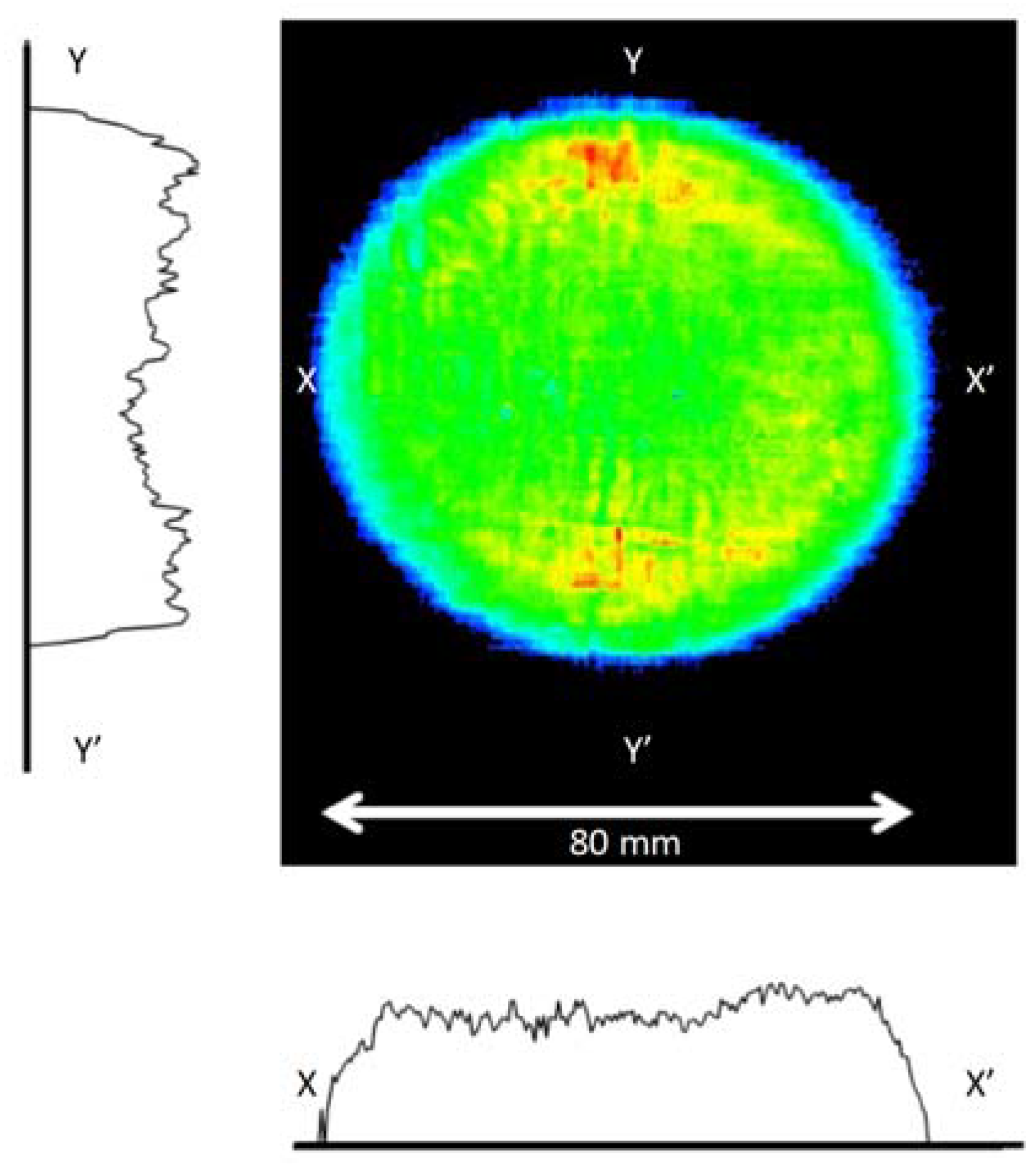
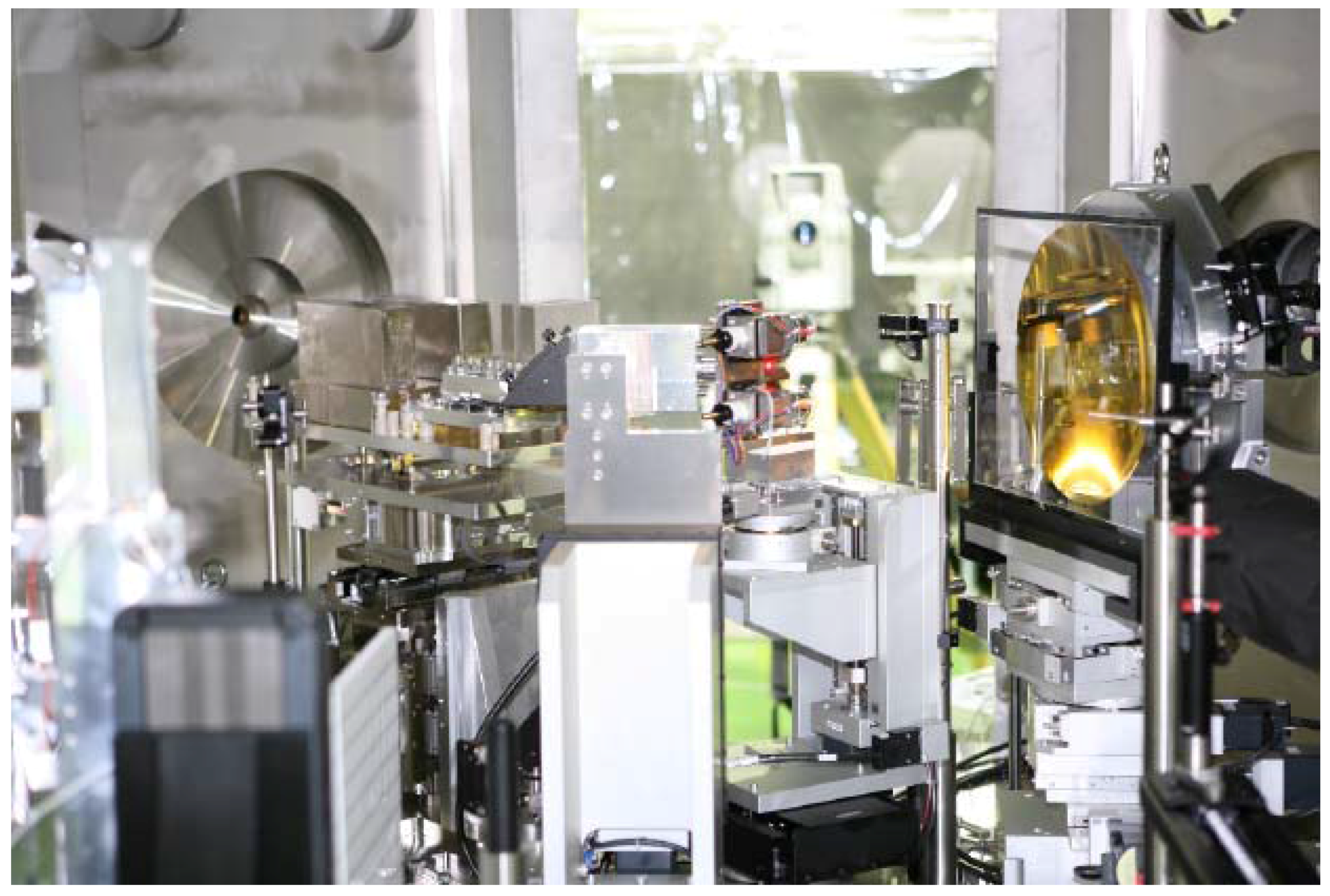

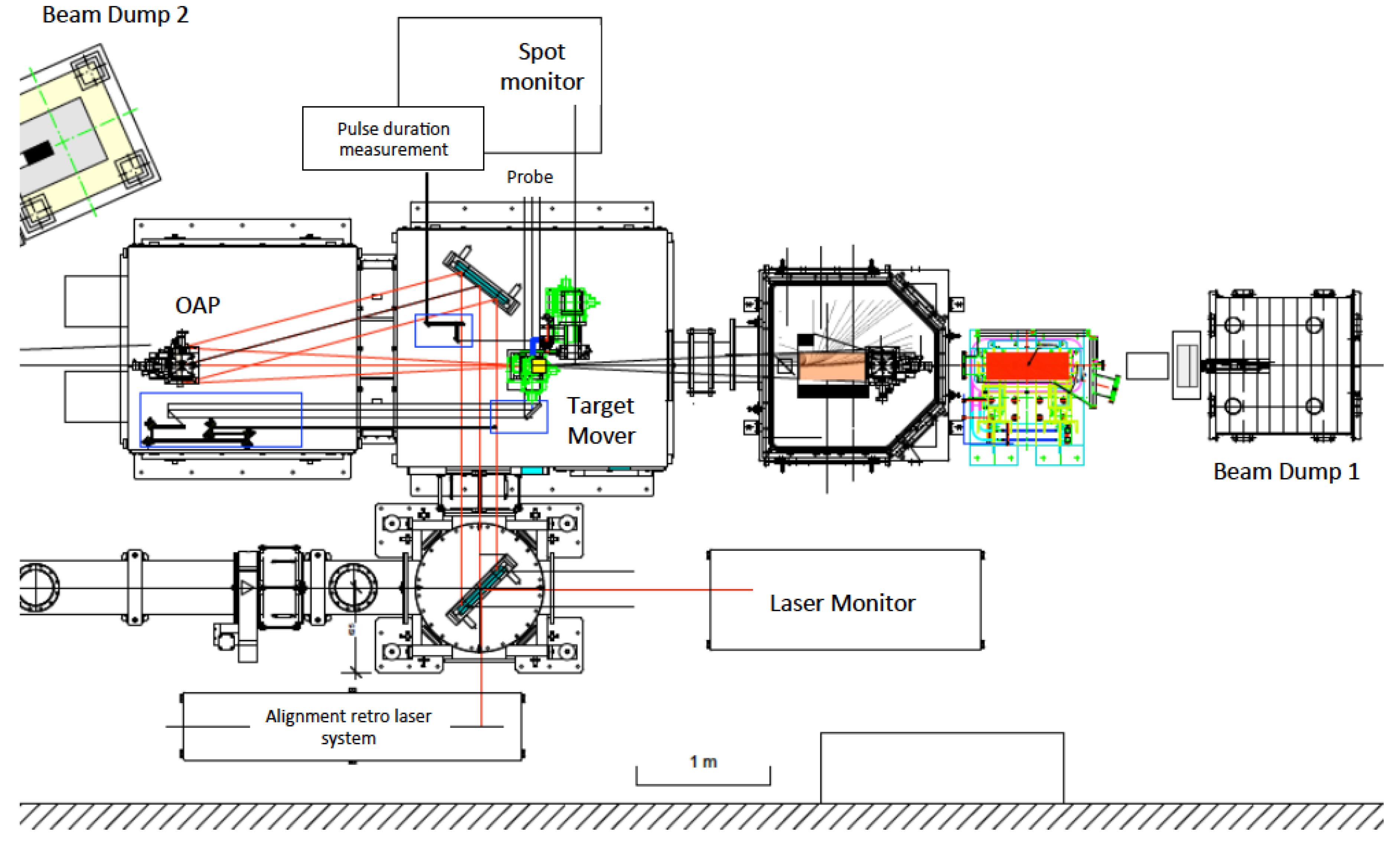

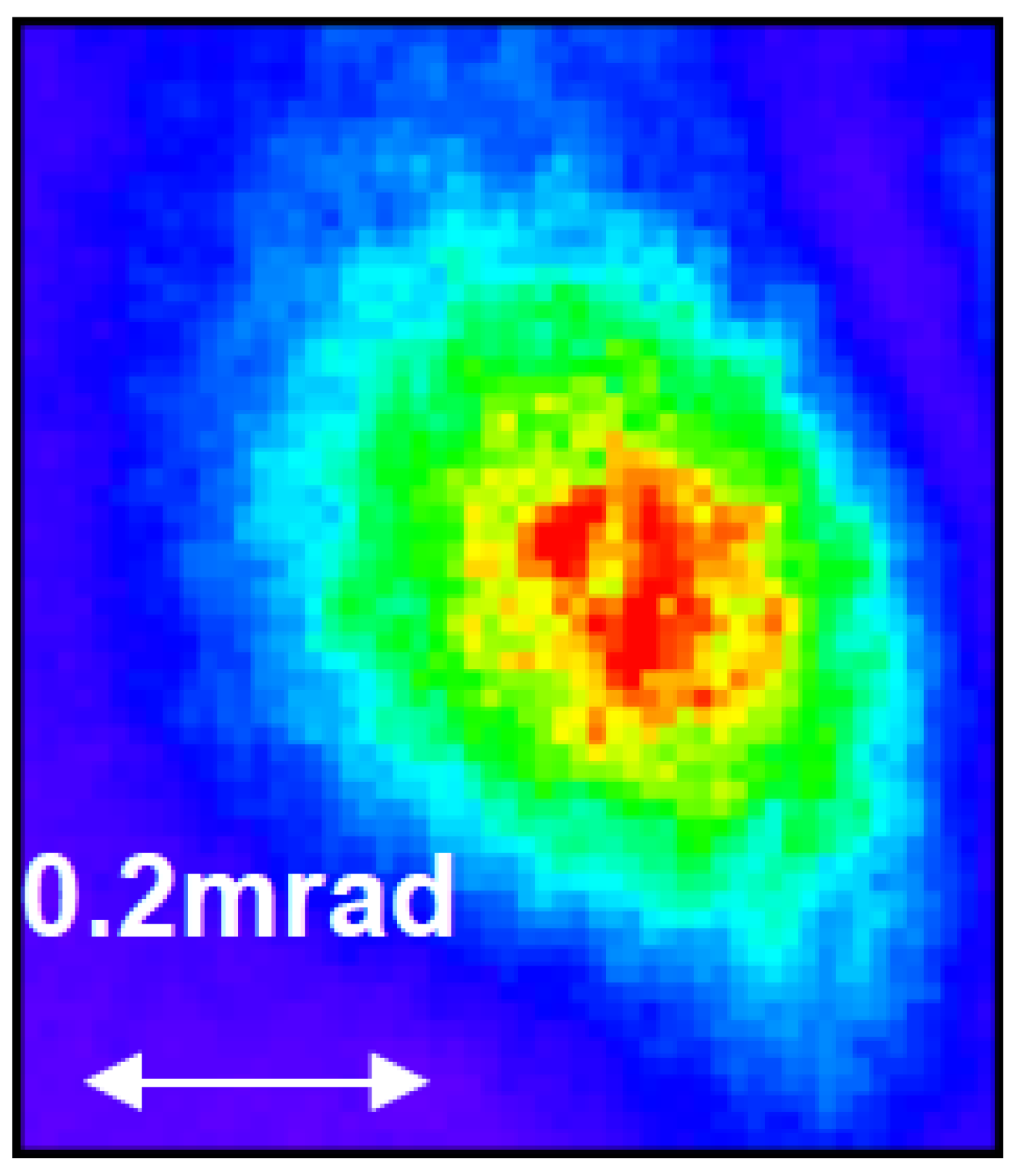
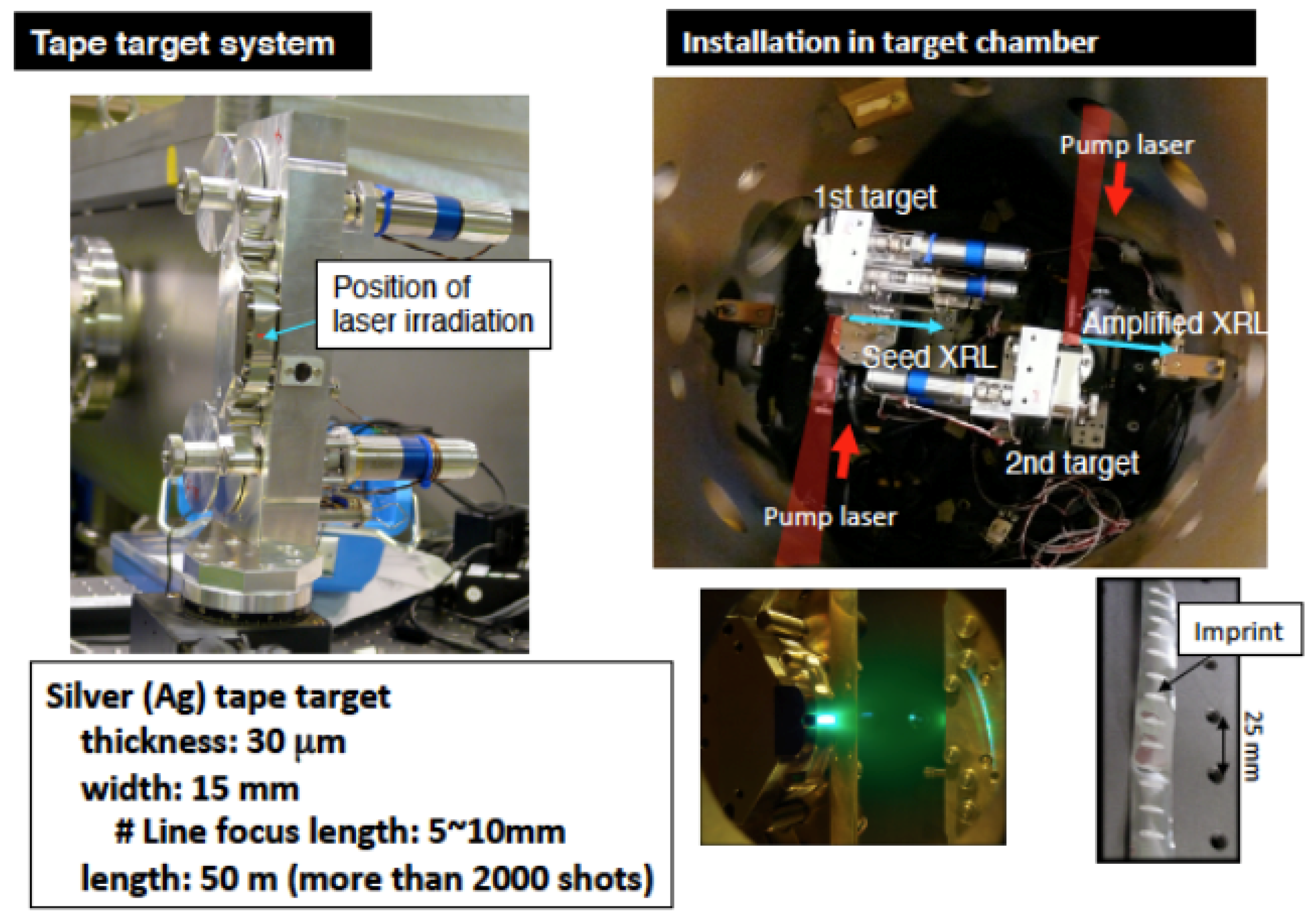
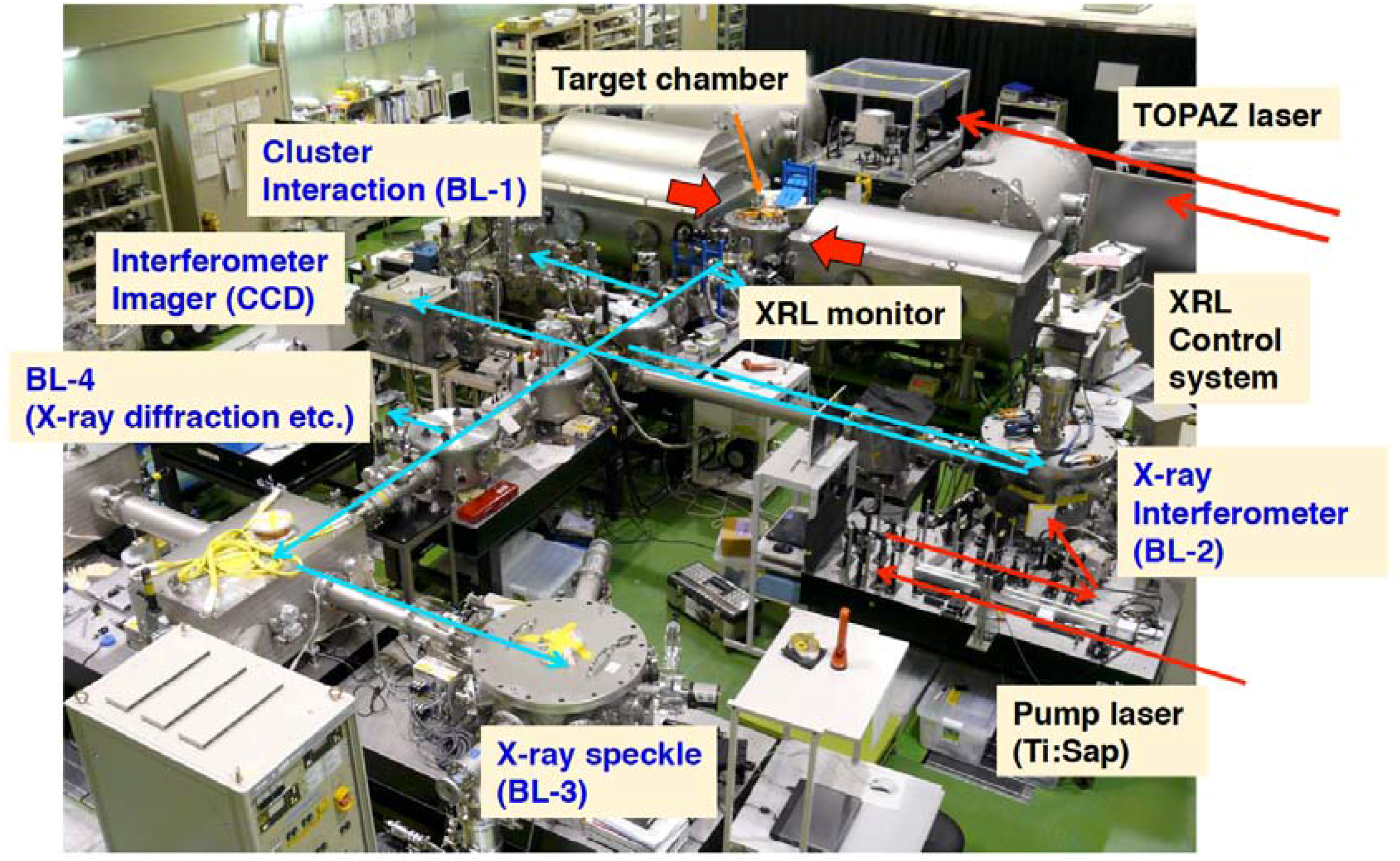
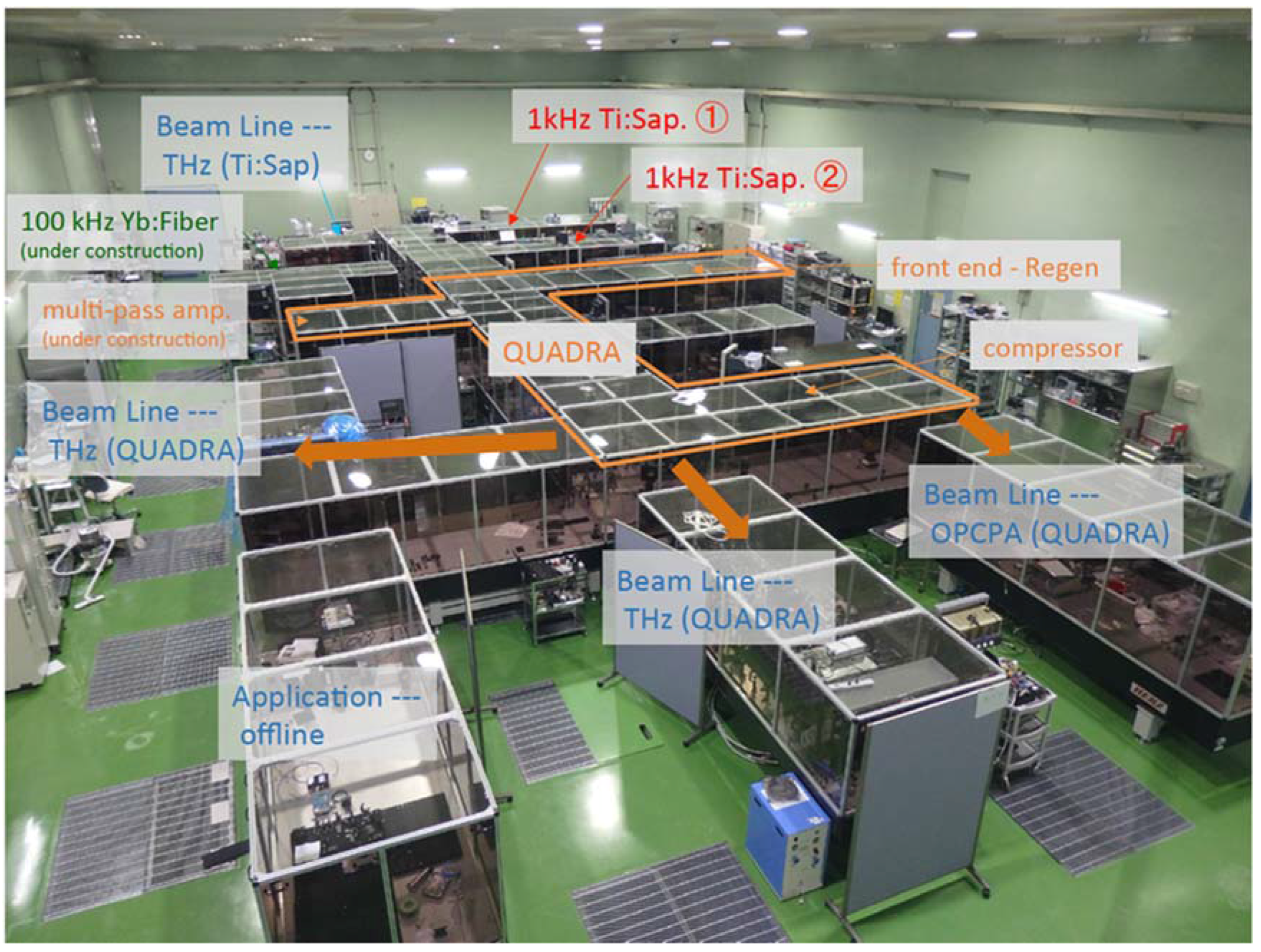
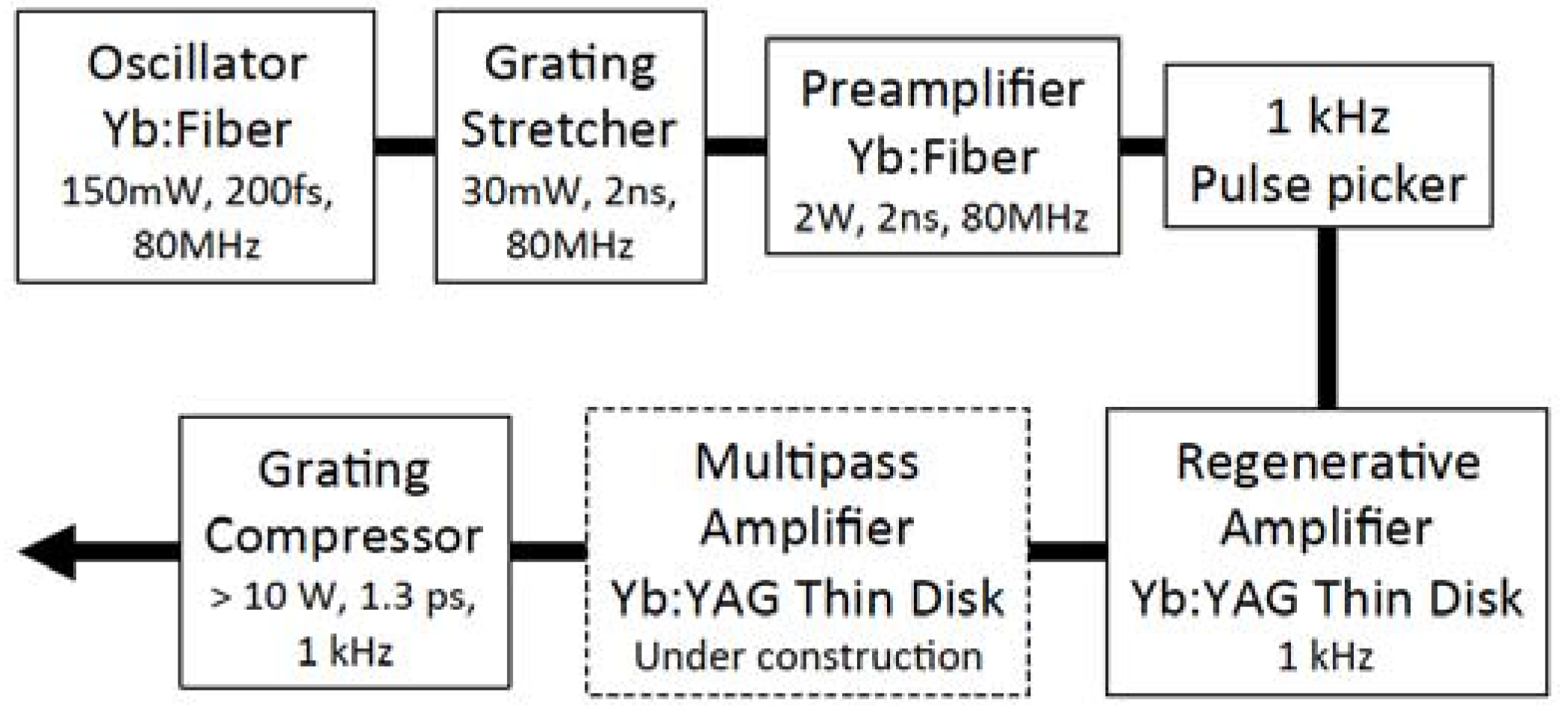
© 2017 by the authors. Licensee MDPI, Basel, Switzerland. This article is an open access article distributed under the terms and conditions of the Creative Commons Attribution (CC BY) license (http://creativecommons.org/licenses/by/4.0/).
Share and Cite
Kondo, K.; Utsumi, W.; Kando, M.; Nishikino, M.; Itakura, R.; Kiriyama, H. High Power Laser Facilities at the Kansai Photon Science Institute. Quantum Beam Sci. 2017, 1, 7. https://doi.org/10.3390/qubs1010007
Kondo K, Utsumi W, Kando M, Nishikino M, Itakura R, Kiriyama H. High Power Laser Facilities at the Kansai Photon Science Institute. Quantum Beam Science. 2017; 1(1):7. https://doi.org/10.3390/qubs1010007
Chicago/Turabian StyleKondo, Kiminori, Wataru Utsumi, Masaki Kando, Masaharu Nishikino, Ryuji Itakura, and Hiromitsu Kiriyama. 2017. "High Power Laser Facilities at the Kansai Photon Science Institute" Quantum Beam Science 1, no. 1: 7. https://doi.org/10.3390/qubs1010007





